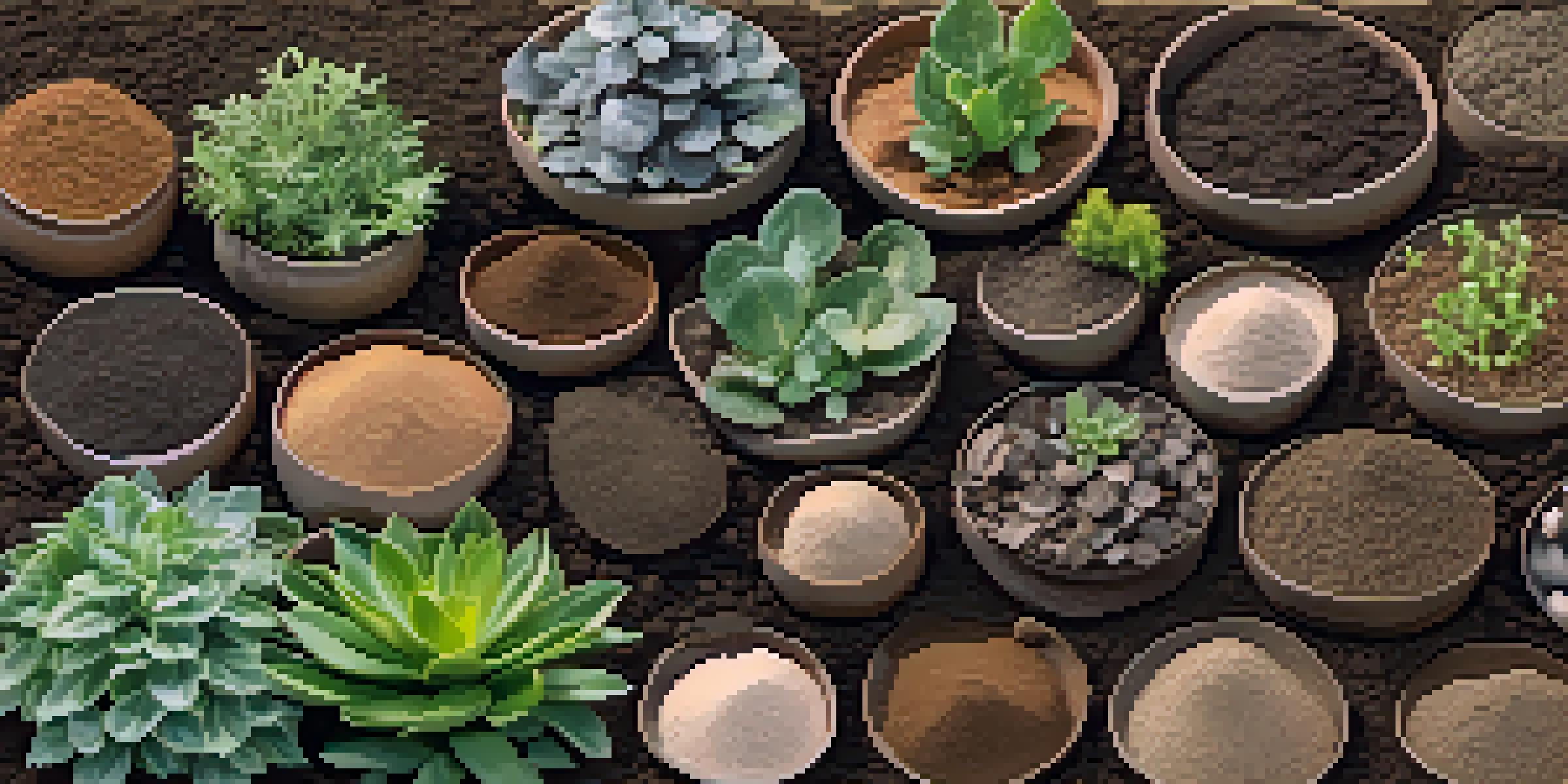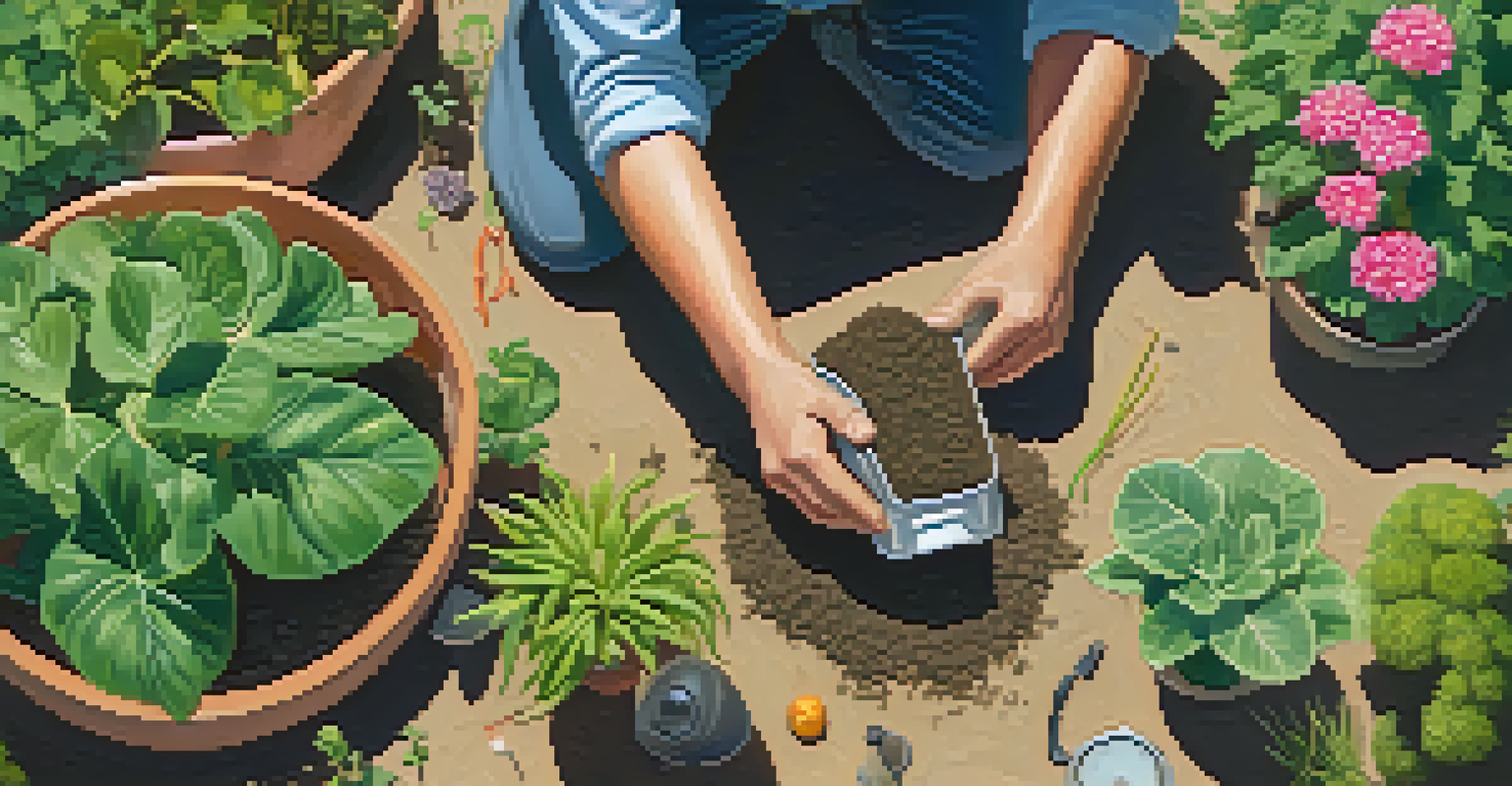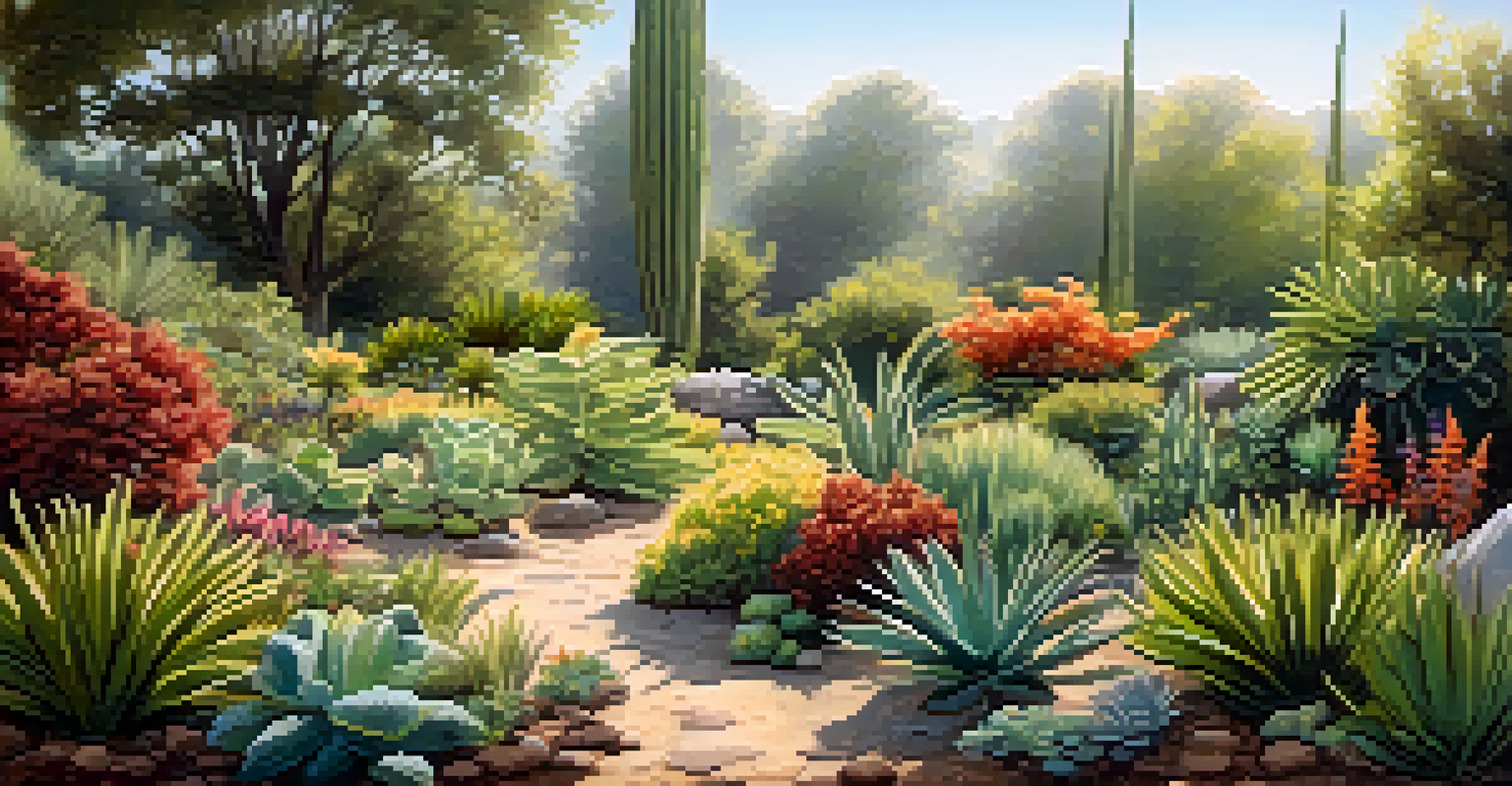Understanding Soil Types: The Foundation of Successful Gardening

Why Soil Type Matters for Your Garden's Success
Soil is not just dirt; it's the very foundation of your garden. Understanding soil types can drastically affect how your plants grow, as each plant has specific needs. Healthy soil promotes strong root systems, nutrient absorption, and overall plant vitality.
The health of soil is directly linked to the health of plants, and consequently, to the health of people and ecosystems.
Different plants thrive in different soil types, just like people have different preferences for food and climate. By understanding your soil, you're better equipped to choose the right plants and create a thriving garden. For instance, sandy soil drains quickly, making it ideal for drought-resistant plants.
Taking the time to learn about your garden's soil can save you frustration and disappointment. Instead of just hoping for the best, you can make informed decisions that lead to a bumper crop or a vibrant flower bed. In short, soil type is the first step toward gardening success.
The Four Major Soil Types Explained
Soil generally falls into four major categories: sandy, clay, silt, and loam. Each type has unique characteristics, affecting drainage, nutrient retention, and plant suitability. For example, sandy soil is gritty and drains quickly, while clay soil is dense and retains moisture.

Silt soil, on the other hand, is smooth and retains nutrients well, making it a great choice for nurturing many types of plants. Loam, often considered the 'gold standard' for gardeners, is a balanced mix of sand, silt, and clay, offering the best of all worlds: good drainage, nutrient retention, and a great structure.
Soil Type Influences Plant Growth
Understanding your soil type is essential as it directly affects which plants will thrive in your garden.
Understanding these types helps you identify what you have in your garden and make appropriate choices. By knowing your soil type, you can amend it and select plants that will thrive, creating a flourishing environment.
Identifying Your Soil Type Made Easy
Identifying your soil type doesn't require a scientific degree; a simple test will do. Start by taking a small sample of your soil and moistening it. Then, roll the damp soil into a ball; if it holds together, you might have clay soil.
Good soil is the foundation of a good garden; without it, even the best plants cannot thrive.
For sandy soil, the ball will crumble easily, and for silt soil, it will feel smooth and silky. If the soil easily forms a ball but crumbles when pressed, you’re likely dealing with loam. This hands-on approach not only helps you identify your soil but also engages you with your garden.
After identifying your soil type, you can research how to improve it if needed. Whether you need to amend your sandy soil for better moisture retention or break up compacted clay, knowing your starting point is key to successful gardening.
Amending Soil for Better Plant Growth
Once you know your soil type, you may need to amend it to better suit your plants' needs. For example, if you have clay soil, adding organic matter like compost can improve drainage and aeration. Conversely, if your soil is sandy, incorporating peat moss can help retain moisture.
Adding fertilizers or specific soil amendments can also boost nutrient levels, ensuring your plants have what they need to grow strong and healthy. This is akin to adding spices to a dish; the right additions can elevate your garden’s overall flavor.
Amend Soil for Optimal Conditions
Amending your soil based on its type can significantly improve drainage, nutrient retention, and overall plant health.
Remember, amending soil is an ongoing process, and regular testing can help you maintain optimal conditions. With the right amendments, you can transform your garden into a lush paradise, regardless of your starting soil type.
Understanding Soil Drainage and Its Importance
Soil drainage is crucial for plant health; too much water can lead to root rot, while too little can cause plants to wilt. Sandy soils drain quickly, while clay soils can retain too much water, creating a challenging environment for plant roots. Understanding how drainage works in your soil type is vital for successful gardening.
To improve drainage in heavy clay soils, consider creating raised beds or incorporating materials such as perlite or gravel. This not only helps with the water flow but also allows roots to breathe and access nutrients more effectively.
Conversely, if you have sandy soil, you may need to implement strategies to retain moisture, such as mulching or planting drought-resistant varieties. By grasping the concept of drainage, you can create a balanced ecosystem that nurtures your plants.
The Role of Soil pH in Plant Health
Soil pH is another critical factor that affects plant growth. It measures the acidity or alkalinity of your soil and can influence nutrient availability. Most plants thrive in slightly acidic to neutral soil (pH 6.0 to 7.0), but some have specific pH preferences.
You can easily test your soil’s pH with DIY kits available at garden centers. If your soil is too acidic, you might need to add lime, while sulfur can help lower pH if it's too alkaline. Adjusting your soil's pH is akin to balancing flavors in cooking; the right balance can make all the difference.
Choose Plants Suited to Soil Type
Selecting plants that are compatible with your soil type increases the chances of a successful and vibrant garden.
By ensuring your soil has the right pH, you can significantly improve nutrient uptake, leading to healthier, more vibrant plants. Understanding this aspect of soil science empowers you to create the best possible environment for your garden.
Choosing the Right Plants for Your Soil Type
Once you understand your soil type and its characteristics, it's time to choose the right plants. Some plants are particularly suited to specific soil types; for example, succulents thrive in sandy soil, while ferns prefer the moisture of loamy or clay soils. Choosing compatible plants ensures they can grow to their full potential.
Researching native plants can also be beneficial, as they are adapted to local soil conditions and climate. By selecting plants that naturally thrive in your area's soil, you're more likely to have a flourishing garden with less effort.

Ultimately, matching plants to your soil type not only leads to a more successful garden but also provides a sense of satisfaction and connection to nature. With the right choices, your garden can be a vibrant tapestry of life, all rooted in understanding your soil.